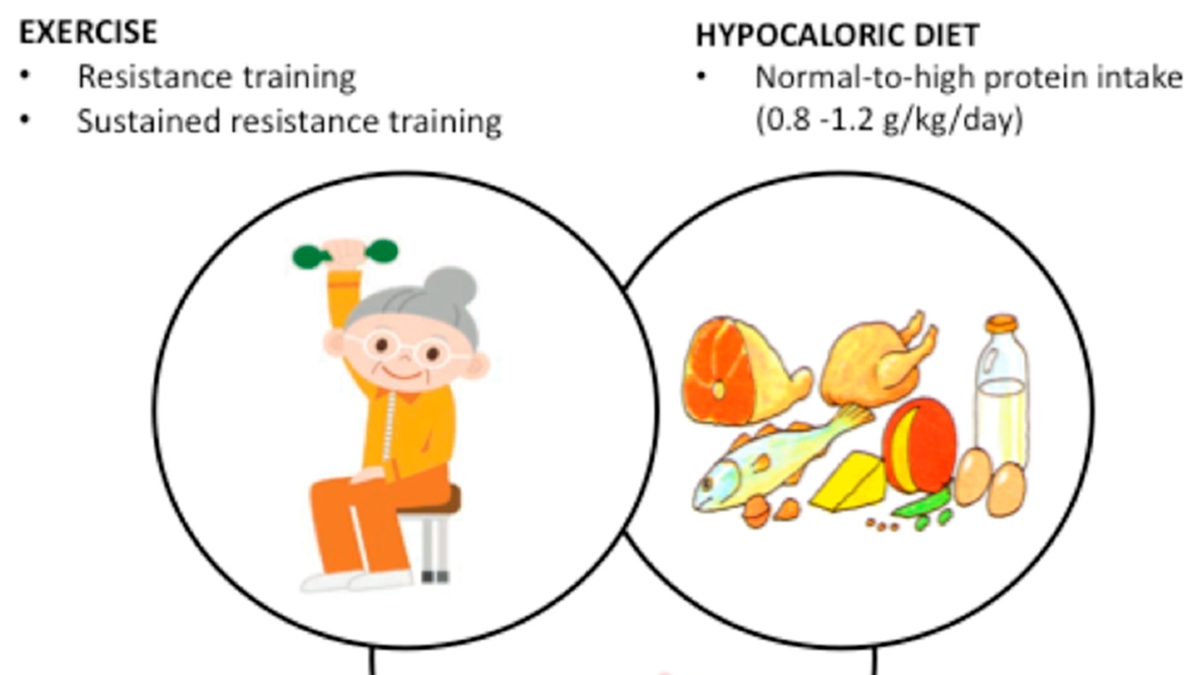
Sarcopenic obesity (SO), a condition characterized by the coexistence of obesity and sarcopenia, is increasingly becoming a significant concern in public health. This complex condition is typically defined by impaired skeletal muscle function and altered body composition. Some of the key factors contributing to SO include aging and its complications, chronic inflammation, insulin resistance, and hormonal changes. Genetic background also plays a role in the pathogenesis of isolated obesity, with systemic inflammation due to increased adipose tissue playing a significant role in its pathophysiology through the synthesis of various cytokines.
Key Objectives in Managing Sarcopenic Obesity
The recent publication of the consensus statement on sarcopenic obesity emphasizes the need for effective management strategies. The primary objectives are to combine exercise and nutritional interventions to create a negative energy balance, reduce adipose tissue, and preserve or increase muscle mass and function. It is important to note that effective management necessitates a patient-centric approach, highlighting personalized care strategies, patient education, and the use of digital technology.
Role of Exercise and Nutrition
Exercise plays a crucial role in managing sarcopenic obesity. Particularly, resistance and aerobic training are recommended to improve muscle function. Nutritional interventions are equally important for preventing and treating SO. These interventions include protein intake and macronutrient manipulation. Early time restricted eating (eTRE) has been found to effectively manage weight and improve metabolic health by significantly reducing body weight, fat mass, waist circumference, and inflammation.
Emerging Therapies and Drug Development
Despite the challenges in finding an effective pharmacotherapy, several emerging and experimental therapies show promise in managing SO. These include anti-obesity medications, testosterone supplementation, selective androgen receptor modulators, and myostatin inhibitors. However, these therapies require further testing and large-scale clinical trials to confirm their efficacy. One significant development in this area is the FDA’s approval of Veru Inc’s application for a Phase 2b clinical study to evaluate enobosarm, an oral novel selective androgen receptor modulator (SARM), to preserve muscle mass and physical function while increasing fat loss in patients.
Implications of Sarcopenic Obesity in Liver Disorders
The relationship between liver and muscle disorders is intricate, and sarcopenia plays a significant role in this nexus. Sarcopenia is a predictor of adverse outcomes, affecting hospitalization rates, complications, and survival both pre and post liver transplantation. There is a need for standardized diagnostic protocols and definitions considering individual factors like ethnicity, gender, and age to guide clinical practice. A multifaceted patient care approach encompassing lifestyle modifications, nutritional optimization, exercise regimens, and potential pharmacological interventions is imperative.
In conclusion, the management of sarcopenic obesity requires a comprehensive and patient-centric approach, encompassing exercise, dietary changes, and emerging therapies. As researchers continue to explore the pathogenesis of SO, understanding the underlying mechanisms can lead to the development of effective therapeutic strategies, ultimately improving the lives of individuals grappling with this condition.
